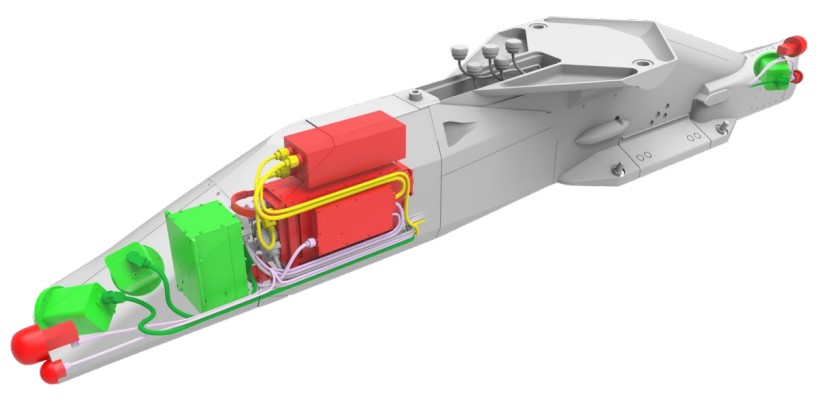Terma to enhance electronic warfare capabilities of Argentina’s F-16s
Electronic warfare, software upgrades, and ground support equipment are key components of Argentina’s new F-16 upgrade agreement.
Argentina’s Ministry of Defense has signed a major agreement with Danish defense company Terma A/S to incorporate critical upgrades to the 24 F-16 Fighting Falcons acquired from Denmark. The announcement was made by Defense Minister Luis Petri via social media and is part of the roadmap to ensure operational readiness and customization of the aircraft for the Argentine Air Force (FAA).
According to Petri, the contract includes upgrades to electronic warfare (EW) systems, software and hardware modernization, mission planning tools, ground support equipment, and comprehensive technical assistance—all essential to prepare the jets for active service.
Electronic warfare systems and survivability in contested environments
Terma A/S has a proven track record in developing F-16 solutions, including systems that enhance aircraft survivability in modern combat scenarios. Among its most notable products are the Advanced Countermeasures Dispenser System (ACMDS), Electronic Combat Integrated Pylon System (ECIPS), and the advanced ECIPS/CJS (Compact Jamming System), which incorporates state-of-the-art jamming technology developed by Leonardo.

The ECIPS/CJS offers fully autonomous jamming capabilities without occupying external hardpoints, as the system is integrated into the pylon itself. It supports mission programming against emerging threats and is effective against advanced air defense (A2AD) systems, with no structural modifications required to the F-16’s airframe.
Weighing 179 kg and designed to use the jet’s existing connectivity, the ECIPS/CJS can be installed on stations 3 or 7, and works alongside other self-protection systems such as the PIDS+ (Pylon Integrated Dispenser System).
A technical and doctrinal integration process
Modernizing Argentina’s F-16s goes beyond hardware. In recent months, FAA personnel have participated in international activities related to operating the new weapon system. In May, an official delegation visited the 68th Electronic Warfare Squadron of the U.S. Air Force (USAF) at Eglin AFB, Florida, to work on integrating the JAMMER system that will form part of the jets' self-defense suite.
The visit, conducted under the Foreign Military Sales (FMS) program, marked the FAA’s first formal engagement with one of the USAF’s most advanced EW units. It follows other recent milestones, such as FAA participation in the global user conference for the F100-PW engine, hosted by Pratt & Whitney.
The first six F-16s—four two-seaters and two single-seaters—are expected to arrive in December. In the meantime, a tactical simulation center is operational at VI Air Brigade in Tandil, allowing for Live, Virtual & Constructive (LVC) mission training with replicated software and configurations from the Danish jets.
With these developments, the Argentine Air Force continues to strengthen its ability to operate a multirole, NATO-compatible fighter system, in line with the technological and strategic demands of today’s international landscape.


Para comentar, debés estar registradoPor favor, iniciá sesión